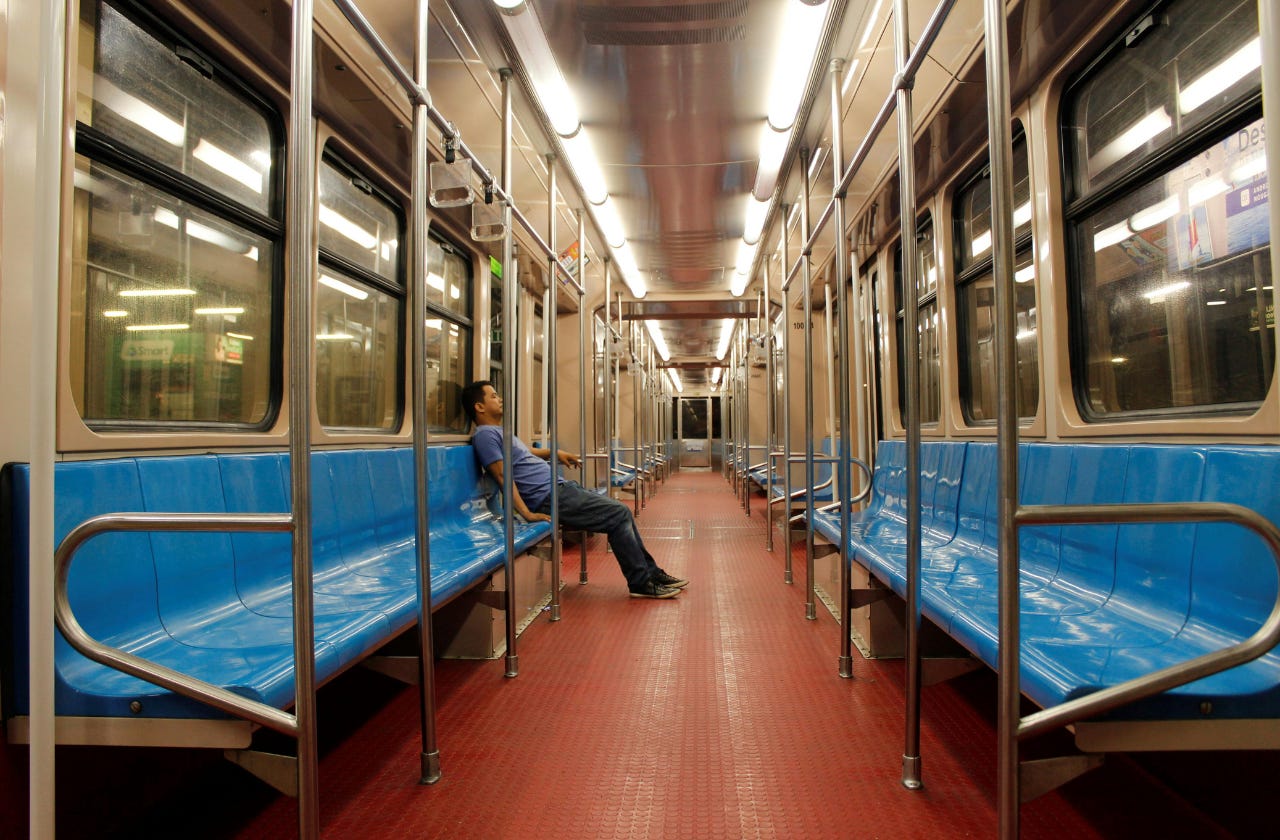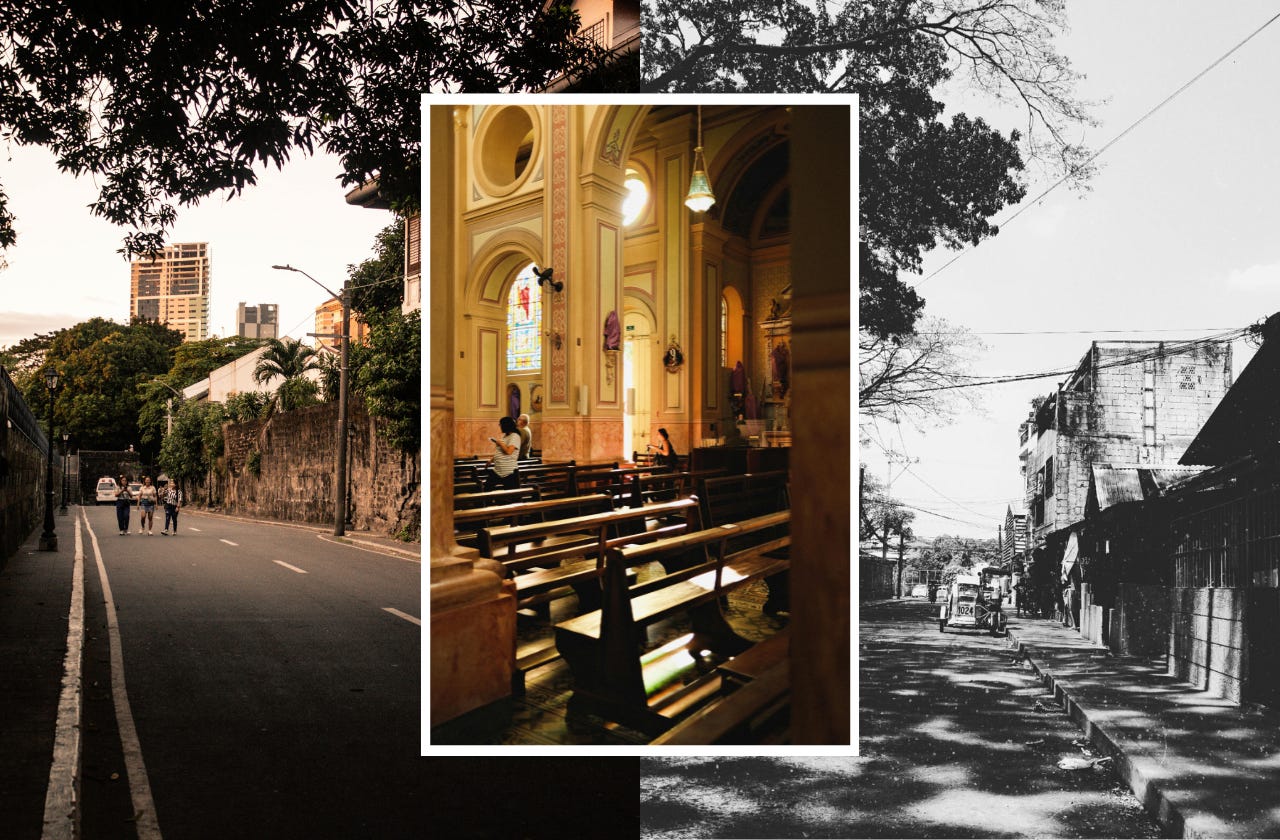The Week the Philippines Goes Quiet: A Holy Pause in a Lively Country
A reflection on the sacred stillness of Holy Week in a country known for its vibrant spirit.
It was the only time of year the streets outside my house sounded like the inside of a church—hushed, reverent, and a little eerie.
If you've ever been to the Philippines, you know we’re loud, happy people. Not just in volume, but in presence. 24/7 karaoke sessions (even at funerals, you would hear someone’s rendition of “My Way”). Jeepneys waiting for the last passengers to fill it while “barkers” shout “Oh, kasya pa España – sampuan to! Sampuan to! España!”. Your neighbors yelling at their kids to come home for supper. Kids yelling their goodbyes to their friends for the day. There’s a pulse here that never really sleeps.
Except during Holy Week.
While most of the world celebrates Easter with chocolate bunnies and pastel egg hunts, the Philippines observes something a little different. We lean all the way in—marking the entire Holy Week, from Palm Sunday to Easter Sunday. It’s during this time that you truly see how deeply faith is stitched into everyday Filipino life—like thread through fabric, or prayer before every meal.
As a kid growing up Catholic, I knew this time as sacred, serious, and oddly suspenseful. The world didn’t just slow down—it practically stopped. Stores would shut. TV shows would disappear from the screen (literally replaced with either total silence or soft Gregorian chanting—IYKYK). Even laughter was toned down, like it might offend someone watching from the sky.
I remember genuinely believing that any audible joy during Good Friday might tip the scale toward sin. Not exactly diabolical, but definitely frowned upon by Jesus and the village titas.
That silence, though? It had its own weight. You felt it in your chest. Like the entire country was holding its breath in collective mourning.
And then there was the year my dad decided it was the perfect time to teach me how to drive. The streets were so empty, there was basically zero chance I’d hit anyone—or that anyone would see me stall the car twelve times at an intersection. The lesson came with zero honks and zero judgment. It was the safest chaos I’ve ever known.
But when I saw a random lady crossing the street, I panicked – even though I clocked her about 500 meters away. I stopped the car in the middle of the road and…well I didn’t learn how to properly drive until I was in my late twenties. I know. Traumatic. (Disclaimer: No lady has ever been harmed by me behind the wheel. Ever. Hopefully never… *knocks on wood*)
A Country in Pause
During Holy Week, the Philippines shifts from its usual energetic chaos to an almost meditative state. Maundy Thursday and Good Friday are national holidays, and you feel it. Malls close. Banks shut down. Public transport slows to a trickle. Even popular beach destinations—normally packed with tourists—gain a strange kind of solemnity.
Some towns host senákulo, a full dramatic reenactments of Christ’s Passion performed in public squares. Others hold pabása ng pasyon, where families chant epic poems about Jesus' life and death for hours—or days—without stopping. Even the act of Visita Iglesia—walking or driving to visit seven different churches in one night—becomes a sacred pilgrimage.
It’s not just about religion. It’s about collective rhythm. The kind of cultural choreography where everyone, regardless of how religious they are, is part of the same slow, reverent dance.
Sacrifice, Spoons, and Spiritual Discipline
Fasting wasn’t just about food—it was about giving something up. Soda, TV, meat, chocolate, noise. The idea was to make room for something deeper. To remove a daily, taken-for-granted luxury and replace it with meaning.
Sometimes that meaning was actual reflection.
Sometimes it was just me, at 11 years old, dramatically crying into a bowl of lugaw (rice porridge) because we weren't allowed fried chicken. There were also times I believed I made Jesus proud by eating my okras in our sinigang na hipon (Filipino sour soup with shrimp). To this day, I hate okras.
But in that small sacrifice, you felt connected to something ancient. Something bigger. You knew your Lenten suffering probably didn’t match up to the crucifixion—but it counted. It mattered.
Stillness, Shared
As an adult, I’ve come to love that rare hush Holy Week brings. It’s one of the few times in the year where the country pauses together. There’s something quietly revolutionary about an entire nation choosing to be still. It’s heavy. It’s holy. And it’s uniquely ours.
Even now, whether you're devout or distant from faith, Holy Week in the Philippines touches something inside you. A kind of cultural muscle memory.
You might not believe everything you grew up with. But the rhythm of it—the slowing down, the silence, the shared ache and reverence—it stays with you.
Want to Know More?
Holy Week is just one of many traditions that hold deep meaning for Filipinos. Some are solemn, some are loud, some are joyful in ways only we would understand.
What else would you like to know about Filipino culture—the quiet, the quirky, and everything in between? I’d love to share more stories with you. Leave a question, a comment, or even your own memory if you've experienced Holy Week in the Philippines.
We may be loud most days, but we’re always listening. ❤️
Thank you Discover Philippines for granting me the honor to write for you! This was a delightful experience for me – writing for the first time for a greater cause, to represent our beautiful country that I love and miss so much!
Until I can walk those quiet streets again, I’ll write my way back home.
- Pasta 💛






